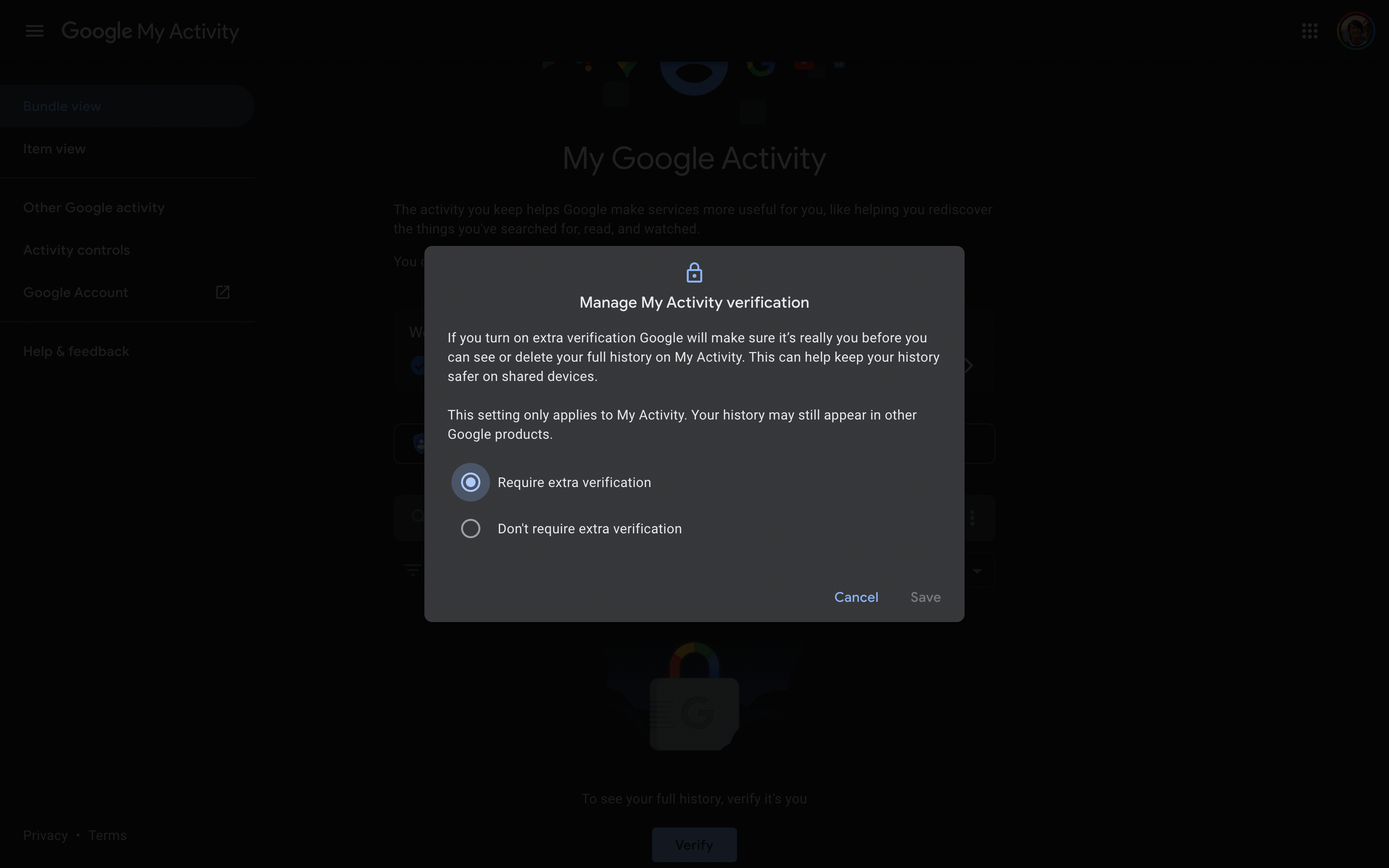
Kicked off by I/O 2021, Google has been making a big privacy and security push this week. The Google My Activity page is now adding extra password verification before it shows all your account usage and interactions.
Currently, visiting My Activity on the web will immediately load a list of activity that “helps Google make services more useful for you, like helping you rediscover the things you’ve searched for, read, and watched.” Opening the page this week presents a prompt to “add more security to My Activity by turning on extra verification.”
If you turn on extra verification Google will make sure it’s really you before you can see or delete your full history on My Activity. This can help keep your history safer on shared devices.
This setting only applies to My Activity. Your history may still appear in other Google products.


After selecting a My Activity option, you’ll be prompted to enter your Google Account password to set it. Once done, the top half of the page loads like normal, but the actual “full history” list below is locked until you “verify it’s you.” This takes you to the standard sign-in page and is a good extra measure. For example, if you use a shared computer and forget to log out from your browsing sessions.
This follows Google at I/O emphasizing its security and privacy practices on Tuesday and a push in major consumer apps like Gmail, Drive, and Photos about how content is not used for advertising.
More about My Activity:
- Google ‘My Activity’ page gets rare web dark theme on mobile and desktop
- How to track your Stadia play time with Google My Activity
- Google makes its expanded ad tracking opt-in, launches new ‘My Activity’ site
- Android 12 Privacy dashboard and controls for camera, microphone coming in Beta 2
Author: Abner Li
Source: 9TO5Google



